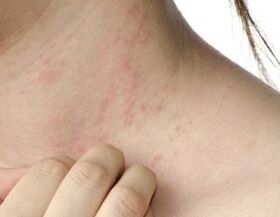
Diseases detected in a timely manner are the key to successful treatment. This rule applies especially to diseases that are very difficult to treat. These include lichen scaly, better known as psoriasis. Over the past few decades, the disease has covered more territory, affecting infants and retirees, tilting statistics in a depressing direction.
It is not in vain that scaly lichen has aroused serious interest. Today, psoriasis has shifted from the classification of common skin diseases to systemic pathology. It has been shown that patients with this disease are more susceptible to infections, heart disease, depression, and diabetes. Given the lack of a unified treatment system, it is very important to identify psoriasis at an early stage.
The first signs of psoriasis
Symptoms of this dermatosis can be recognized even for those who have never had a similar problem. A common sign of lichen scaly is various skin rashes.
These rashes appear on inflamed areas of the epidermis, can be large or chiseled, with crusts, and sometimes fill with pus. Each rash element is called a papule. Observations of patients with psoriasis have shown that the disease can show the first signs even before the appearance of papules on the body.
In most cases, the appearance of the rash is preceded by mood swings, loss of appetite, and digestive disorders. It has been observed that depressive conditions, often for no apparent reason, very often appear a few days before the formation of the first papule. The problem is that patients with similar symptoms do not see a reason to go to the doctor. But, in the event of a timely visit to the doctor, a specialist is not always able to prove the true cause of the condition and make a correct diagnosis.
Rash on the body is the main symptom of psoriasis. Depending on the type of scaly lichen (and there are dozens of them), the site of the lesion, the age of the patient, the disease can manifest itself in different ways.
Manifestations in Children
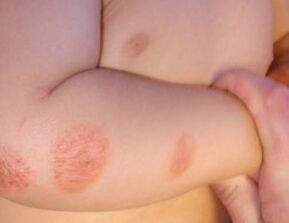
Scaly lichen can even occur in infants. This is very rare, but is often exacerbated by the parents themselves. The first signs of the disease may resemble heat or allergies, so adults rely on their own knowledge and care for the child himself. In most cases, babies with psoriasis go to the doctor when the disease progresses.
In infants, scaly lichen appears most often in the folds: in the inner thighs, armpits, between the toes and hands, in the folds of the skin around the neck. The appearance of papules is often accompanied by itching, so that the baby can become very restless, do not sleep at night, and refuse to eat.
Lesions resemble thrush, diaper rash, or eczema. Inflamed skin turns red or pink and feels hot when touched. Pustules can appear on time or form entire spots - plaques. As a rule, such spots rise on healthy skin. A special feature of psoriatic plaques is the presence of dry crusts and scales on the rash, but in infants, papules and plaques are often located in places where there is a lot of sweating, which makes the inflammatory surface moist.
When these symptoms appear, it is important not to waste time on folk remedies and tips from the older generation. If a newborn has a rash (whatever), it should be shown to a pediatrician and dermatologist. Treatment of psoriasis in infants is not much different from adult therapy, infants are given non-hormonal therapeutic ointments, in severe cases, pills and injections.
In older children, the early symptoms of lichen scaly do not differ from adults. However, children can suffer from psoriasis:
- Plaque- occurs most often. The signs are dry, red, and hot. The papules are covered with a hard crust with pale scales on the surface. They can appear anywhere, point directions or merge into plaques. Itching most often, but not necessarily.
- Pustular- characterized by the presence of fluid or pus in the papule. The initial stage is similar to plaque: a papule with a clear edge, rising above the epidermis, but filled with fluid.
- The hairy part of the head- may look like dandruff, but eventually form a very fragile crust all over the surface of the head or parts. The hair in the affected area is thinned, becoming thinner. This type of psoriasis often appears in the folds behind the ears.
- Palmar-plantar- almost never happens in children. Localization differences in the palms and soles of the feet, while "lakes" with rough skin and scales appear.
- Flexible surface- most often formed on the elbows, knees, genitals. It is different from other types of psoriasis if there are no scales. The affected skin is covered with a fine, firm crust, resembling a raised point on the surface of a healthy epidermis. Colors - pale pink, gray-white, pink.
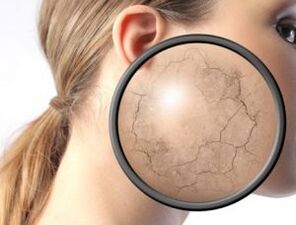
For any manifestations of local exfoliation and inflammation on the skin, you should seek the advice of a dermatologist. Children's psoriasis develops rapidly, especially if accompanied by itching.
Damaged papules are easily infected, grow and cover growing areas. After a prescribed treatment regimen, it is important to constantly monitor the child, prevent scratches and new cuts on the body, and follow a diet.
Manifestations in women
The first stage of psoriasis can manifest itself at any age, but often the first outbreak occurs before the age of 20, although the disease can "sleep until" even up to 50 years. Adult men and women experience the same symptoms as teenagers. At an older age, the risk of developing psoriasis on the soles of the feet, nails, and joints increases.
World disease statistics show that women suffer from scaly lichen almost one and a half times more often, while the main part is experiencing plaque psoriasis. What exactly causes this selectivity is not known exactly, but scientists suggest hormonal factors are among the causes of psoriasis.
Because of the same hormone, scaly lichen symptoms in girls most often appear during PMS, when the hormonal background changes. Also, women's natural sensitivity makes them more susceptible to stress, depression, neurosis. For someone with a predisposition to psoriasis, any psychological instability can trigger an outbreak of the disease.
Among the other causes that aggravate the disease are:
- skin damage (burns, cuts, open wounds);
- allergic reactions;
- infectious diseases;
- metabolic disorders;
- bad habits and unhealthy diet.
In fact, if a woman has a genetic predisposition to psoriasis, one of the annoying factors sooner or later will cause an outbreak. To prevent this from happening again, the patient must monitor his lifestyle carefully.

The symptoms of psoriasis in women are the same as in men, the only gender difference appears when the external genitalia are affected. In the genital area, girls are faced with plaque-like appearance and upside down, sometimes pustular. The first symptom is inflammation of the skin on the labia or pubis, rarely the mucous membranes are affected.
Small pinhead papules may appear in multiples or as a single patch. Scales with genital psoriasis rarely appear, as localization locations do not allow air to enter. A special feature of psoriatic rashes is that the papules and plaques protrude slightly above the surface and heat up. With such symptoms, you should immediately contact a dermatologist and gynecologist.
Manifestations in Men
Half of men, as we know, suffer from scaly lichen a little less often than women. However, the course of the disease and the symptoms remain the same for both parts. Surveys and analyzes of patients show that in men the first symptoms appear at the age of 22 to 25 years, while in women it occurs from the age of 15 years. Such “late” symptoms are associated with the fact that the hormonal balance at half-strength comes later.
Psoriasis starts in men the same way. In most cases, small papules with silvery scales first appear, then merge into large spots - plaques and "paraffin lakes".
Intestinal psoriasis affects large areas of the body at once, but with small separate joints.
You can also distinguish psoriasis from other skin diseases at home, if you examine the inflamed elements carefully:
- A dense coarse crust forms on the surface of the papules and plaques, which peel off. The white scales on the surface are easily detached when scraped, resembling shards.
- If you remove the scales completely from the papule, a thin transparent film remains on it.
- While removing the film from the psoriatic element, large droplets of blood appear in this place, as there are many capillaries in the papule.

In addition to obvious symptoms, scaly lichen is sometimes accompanied by general weakness of the body, stressful conditions, and an increase in body temperature. Psoriatic elements can vary in shape, for example, small individual papules in small amounts appear with point lesions. Infections of large areas of the body at once (whole back, sides, abdomen, legs) occur with tear-shaped psoriasis, while papules resemble drops. The large localized spot is a sign of coin psoriasis.
Based on observations of patients of both sexes, scientists have concluded that in men, scaly lichen is more severe, and the frequency of exacerbations is greater than in women. Expert reviews state that this is due to the superficial reluctance to be treated. However, the weaker half pay more attention to their health and visit the doctor for prophylaxis more often than the stronger sex. The only type of psoriasis in which men do not hesitate with treatment is genitals. Appearances of plaques such as plaque, back, or pustular can appear on the penis, scrotum, or pubis.
Due to the sensitivity of the skin in this area, inflammation occurs very quickly and requires immediate treatment. When detecting a rash on the genitals, there is no need to spend time for "self-examination" and self-treatment. Even exfoliating a lot of skin, without inflammation and red itching, is considered a reason to go to the doctor.
Nail psoriasis (onychodystrophy) and scalp in men are also common. Both of these types, according to dermatologists, are most commonly launched by men. Although there are many photos on the Internet with signs of the disease, scaly lichen symptoms are considered to be fungus or dandruff, and they go to the doctor with an already progressive form.
In case of damage to the scalp, severe exfoliation, sometimes itching, rough crust in place or the entire surface of the scalp appears. Psoriasis on the nails is manifested by discoloration of the nails, the appearance of depression and bruising, and compaction of the surrounding nail plate and skin. We will consider symptom reduction in more detail below.
Therefore, in children, women and men, the symptoms of psoriasis are no different. Any inflammation of the skin of the body, head or nails is a reason to see a doctor. If the affected area is not itchy or flaky, this does not mean that the skin is not affected by psoriasis.
Psoriasis Symptoms
The first signs of the disease usually last for a few days, after which they begin to develop rapidly. Sometimes the disease can develop very slowly and the initial symptoms are "delayed" for a week or more. However, the disease will enter the full phase, sooner or later. The localization of psoriasis often misleads the patient and the specialist himself. The same nail psoriasis at the first manifestation is very difficult to distinguish from a common fungal infection.
Manifestations on the scalp
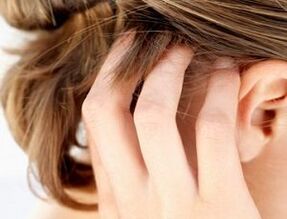
In the early stages of development, psoriasis on the scalp looks like a little peeling. Gradually, the affected area acquires a reddish color, can be sore and itchy, sometimes protruding beyond the hairline: on the back of the head, behind the ears, on the forehead. The epidermis in the inflamed area becomes denser, the structure of a dense psoriatic rash is considered one of the special features.
This manifestation is often confused with seborrhea, in which the scalp also exfoliates strongly. However, unlike seborrhea, the psoriatic element bleeds if the upper scaly layer is removed from it. In addition, psoriasis is characterized by violations of the affected skin. If this rash is accompanied by severe itching, patients often exacerbate the condition with plaque and papule trauma. Open wounds quickly become infected and the disease persists.
This type of scaly lichen appears in children and adults. Self-medication trials often worsen the picture of the disease, therefore, at first suspicion of psoriasis, it is better to consult a specialist. A trichologist and dermatologist can understand the nature of inflammation accurately, it is better to show the child in advance to a leading therapist.
Manifestations on the skin of the body
In the body, often the first papules appear at the site of folds and friction: in the knees, in the armpits, in the elbows, in the neck. Depending on the type of psoriasis, the manifestations may be different. Like children, adults can suffer from many of these diseases, but a few more points are added to the list above.
In addition to the most common types of scaly lichen, people over the age of 18 may experience:
- Pustular,which does not differ in symptoms in adults and children. It affects any part of the body and is characterized by severe travel. Often accompanied by fever and general weakness. Papules are first filled with clear liquid, which distinguishes this type of disease from others. If they are damaged and re-infected, pus will appear inside them.
- Eritrodermic psoriasis. It is considered a very complex form of the disease, often it does not appear immediately, but develops from plaque or pustular. But free courses are also possible. Unlike normal psoriasis, this one affects large parts of the body and develops rapidly. Papules can be "empty" or filled with pus. If the psoriatic element is painful and grows at high speeds, affecting large body areas, most likely erythrocerma.
- Tear-shaped,which, as we already know, is characterized by frequent and frequent skin lesions. At the beginning of the disease, the papules are very small, with clear edges, and convex tears form. At the first sign, it affects a small part of the body, but gradually grows. Can appear on arms, legs, abdomen, back, neck.
- Psoriasis arthritis.The worst thing that can happen with this disease is damage to the joints. Often this happens in people who are already sick with one type of psoriasis, but can also appear as an independent disease. It affects the small joints first: the phalanges on the toes and hands, often moving to more important locations. The first signs for him are pain and soreness in the joints, fever, swelling of the phalanges of the fingers.
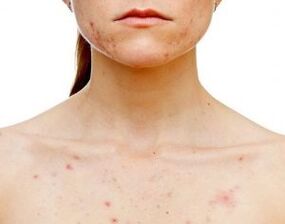
Rheumatoid arthritis and erythropodermic psoriasis are considered very dangerous, as they cause more serious complications. If the joint is damaged, the disease threatens with actual disability. However, often the most severe form of the disease appears in patients who already have psoriasis.
Foot manifest
Legs most often affected in the knee area, can be reverse psoriasis or plaque. In this case, the knee is completely covered or partially with a dense crust with a rough white surface. Often, with a knee defeat, the same thing happens on the elbow, but not necessarily. We have learned how to diagnose psoriasis with papules.
Also, the foot is a common tear-shaped lesion zone. In this case, most of the foot is covered with small papules, which at the same time occupy the area from the lower leg to the thigh. Elements are inflamed, hot, sometimes itchy and sore.
Coarse, painful itchy skin on the feet indicates plantar psoriasis, while it can "touch" the palms at the same time. This is a very common form of the disease, as the feet are most susceptible to mechanical stress. Skin at the site of lesions cracks, exfoliation, itching. It is important to seek timely advice, as fungi and infections can enter the gap, causing severe complications.
Manifestations on nails
Onychodystrophy affects the nail plate. It often accompanies other more complex forms of psoriasis, but sometimes it appears by itself. With such diseases, patients are also usually late, mistakenly considering the disease as a fungus. Symptoms of the disease are:
- change the shape of the nail;
- depression and tubercles on the nail plate;
- nail discoloration (light brown, murky, with dark spots);
- rough skin under and around nails;
- excessive growth on nails;
- peeling nails along and on plates.
Also does not need time to treat this type of disease. Slowly but surely, as a result, the patient may lose his nails completely without recovery. For advice in this case, you should also contact a dermatologist.
Hand Manifestation
Psoriasis attacks the arms as often as other parts of the body. Often, under "vision" he is elbow, because he is most prone to friction, bending, damage. In this area, inverted pustular psoriasis, like plaque, is localized. In this case, the first signs of the disease develop in the same way as in the knee.
A very problematic area of the arm is located in the armpit. All kinds of diseases develop quickly here, as it is a hot and humid place, without good air access. In these cases, psoriasis is not always covered with flaky crusts, plaques and pustules may resemble normal irritation or diaper rash.
If the inflamed point increases and multiplies - you should see a dermatologist immediately.
Manifestation of disease in case of damage to joints
As already mentioned, small joints in the fingers and toes are most often affected by psoriatic arthritis. On a difficult journey, the disease affects the joints of the spine and pelvis. It is very difficult to recognize the disease at an early stage, especially at home. Unfortunately, the diagnosis is very difficult. Today, even clinics can only determine the consequences of joint damage, and do not prevent the disease.
In most cases, arthropathic psoriasis is a complication of another form of the disease and rarely acts as an independent disease. Its special feature is that it affects the connective tissue around the joint. For example, if the finger joint is affected, the patient develops dactylitis - inflammation of all the tissues in the finger. At the same time, the volume increases, does not bend, and hurts.
Conclusion
Today there is not a single psoriasis treatment system, and even a drug that can help every patient with this disease is just as effective. Scaly lichen is classified as a systemic non-communicable disease that occurs in a chronic form. It is impossible to cure it once and for all, but it is very possible to achieve long-term forgiveness. Early detection of the disease greatly simplifies this task.
For preventive purposes, doctors recommend undergoing a general examination and undergoing tests every six months or a year, even if there is no suspicion of disease. With the appearance of rashes, prolonged irritation, large exfoliation areas on the skin, you should immediately contact a specialist and do not waste valuable time for dangerous self-treatment.























